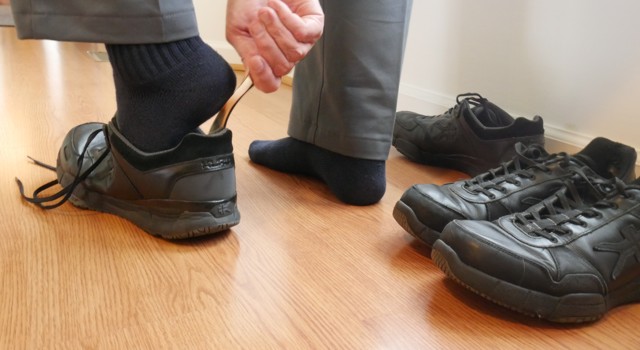
When I was a child, I went to play at one of my friend’s houses and was surprised to see the yard littered with toys. A bike was tipped over on its side in the middle of the grass. It had been there long enough that leaves had settled on it. I could tell it had been rained on for months; rust lines were showing around the screws. And it wasn’t just the bike. Balls were bleached on one side. Towels were rotting by a dirt-filled wading pool.
I understand that we live in a disposable society these days. Manufacturers make products with planned obsolescence while social media suggests we should spend money on what is new, modern, and trendy.
However, this is a flaw of our modern society.
Generations past lived in a culture that emphasized taking care of possessions. Treasured purchases were passed from generation to generation. They were stored in boxes and chests with padding to keep them safe.
Taking care of your things is a basic life skill. Pick up your toys after you are done playing with them and put them somewhere safe. Even my toddler is learning to do this.
If you are going to spend money buying things, you can save money by taking care of them so that they don’t have to be so frequently replaced.
For example, some car maintenance is more critical than others. The first priority would be regularly changing your oil and oil filter. Failing to change your oil can result in ruining your engine, and replacing an engine is very expensive.
Changing the air filter on your house’s air unit is also important. Failure to change the air filter can result in the unit having to work harder, freezing up, or needing to be replaced more frequently. Heating and cooling units are expensive. Extending the life of your current unit saves a significant amount of money.
It is also best to clean the lint filter on your dryer before each load of laundry. It keeps the dryer from working harder and therefore helps the dryer last longer. It also reduces the time required to dry your clothes which reduces your energy bill. It also reduces the risk of it starting a fire, which is perhaps the greatest savings. If you really want to be thrifty, save the lint for a camping fire starter and see how quickly it will burn.
Taking care of your food means never letting food go to waste. “Eat it up” is part of a Depression era mantra. Leftovers are tomorrow’s lunch or ingredients for tomorrow’s dinner. Also, your food should be stored where it won’t go bad and used before its expiration date.
Obviously, there has to be a limit on the amount of time you spend taking care of your things. You should judge what the consequences might be and assess if you are willing to pay them in order to save a little bit of time.
Over a decade ago I purchase a chair which came with maintenance instructions suggesting that I should tighten the screws on my chair every six months. I read those instructions and decided that I was not going to follow that maintenance schedule. I judged that the consequences of failing to perform this task would be mild.
However, I still take care of the chair in many other ways. I sit down carefully, rather than throw myself upon it. I store the chair inside and away from environmental dangers. When I am not sitting in it, I put a towel down on the seat to keep the cats from scratching it.
The thrift of taking care of your things is as much a mindset as it is a set of behaviors. It is a wealthy mindset that pays off every year you don’t need to buy a replacement. The savings, while invisible, can be tremendous. In our 2004 article, “Wealth Is What You Save, Not What You Spend“, we chronicle the savings from simply extending the life of a pair of tennis shoes.
You may decide that you want to purchase a new pair of shoes every year. You may find your shoes wear out after a year of daily use. This too has a budgeting solution.
If you alternate which shoes you wear, you can extend their life span. Shoes need to dry out for a day or two after eight or more hours of wear. If you find a favorite shoe, purchase two identical pairs so you can cycle them. Often the second pair will be at half price or free in a sale and alternating which pair is worn extends the life of both shoes.
Additionally, you can use a shoe horn when putting on your shoes. This prevents the heel from being crushed as it is put on each day. Keeping the heel of the shoe intact prolongs the quality of the shoe. Undo your laces before trying to remove your shoe for the same reason.
Each of these suggestions may seem small, but those small savings produce large effects using the power of a compounding investment. Every time you take care of the things that you purchase you have the opportunity to generate significant savings.
Photo by author Megan Russell.